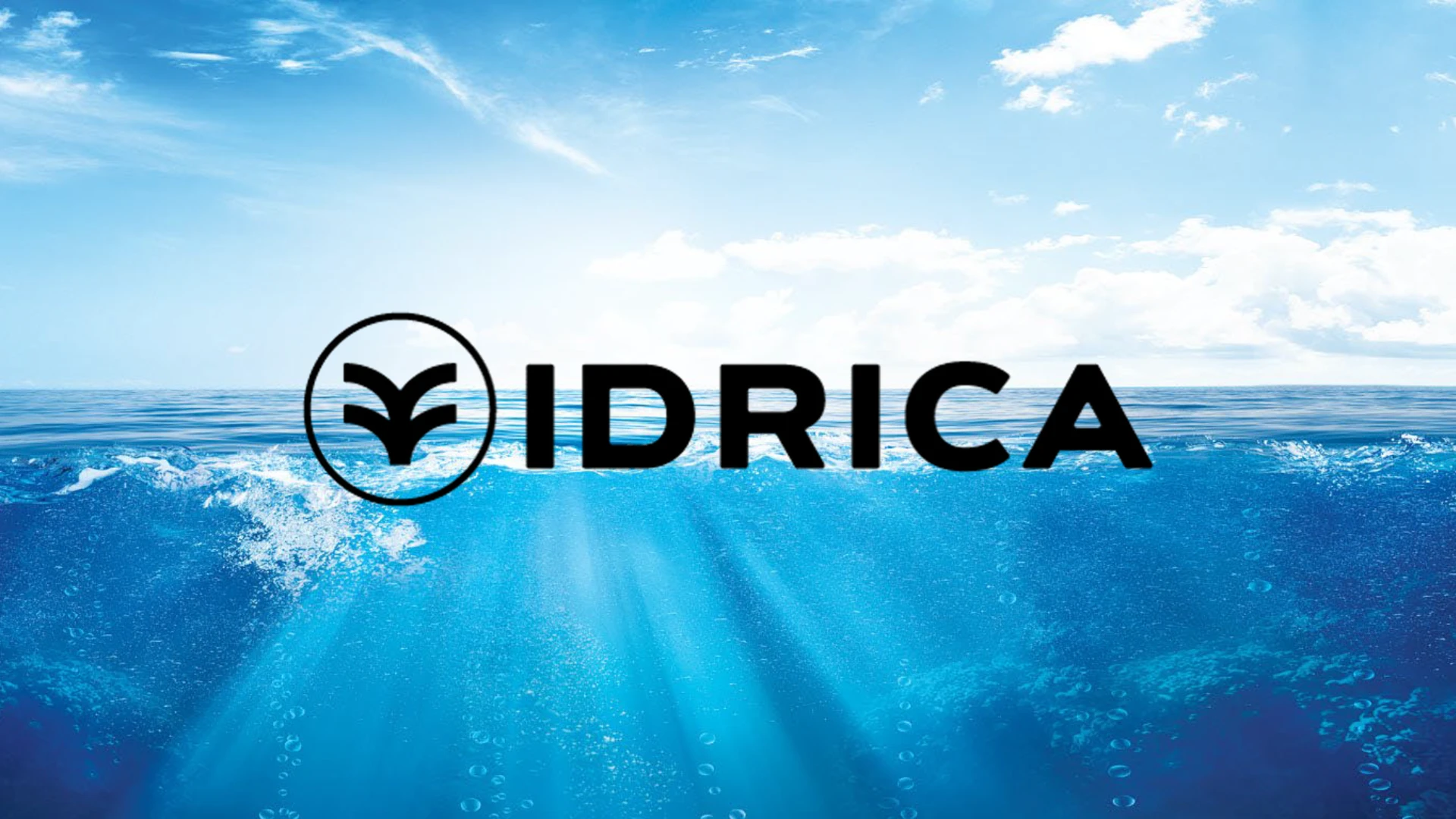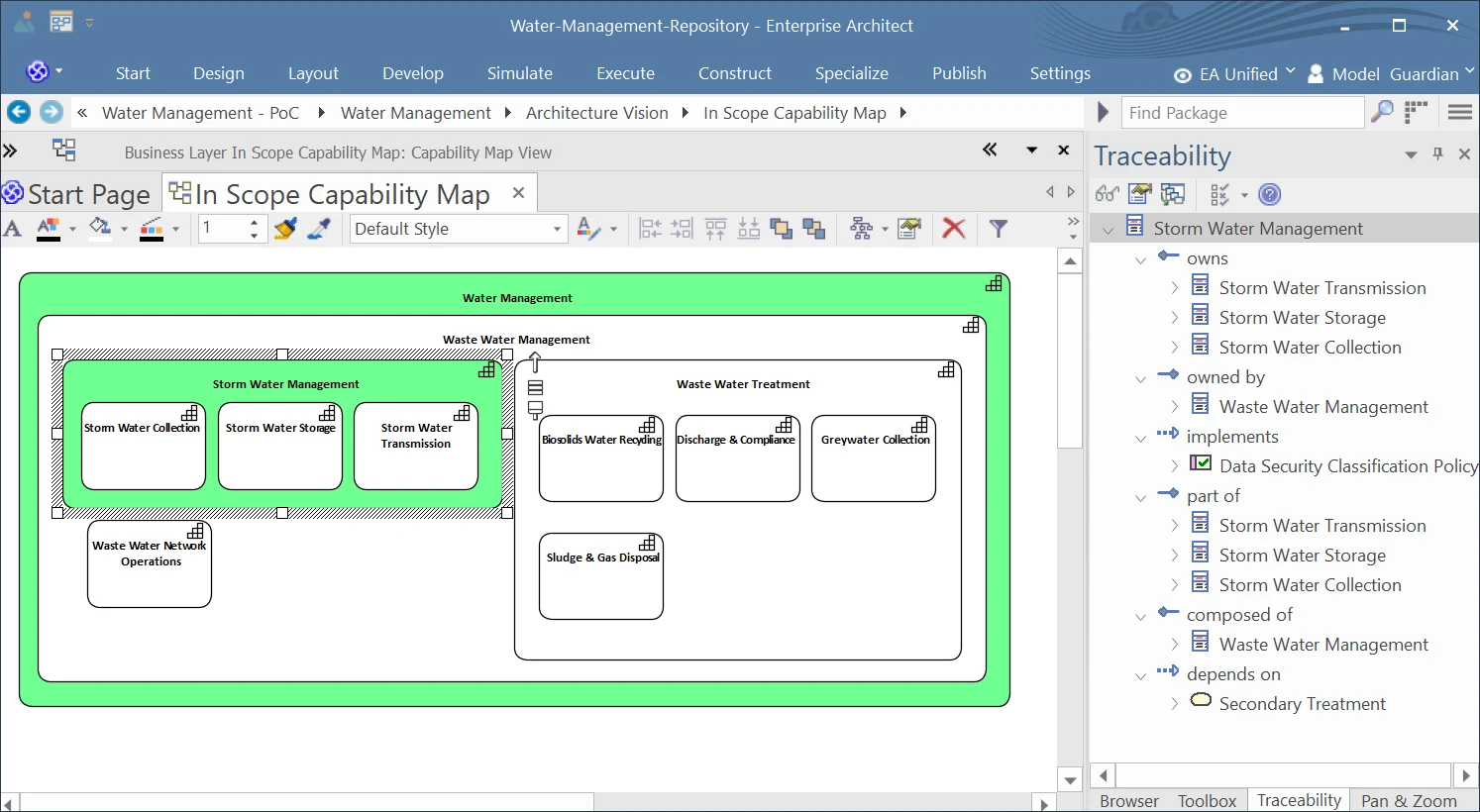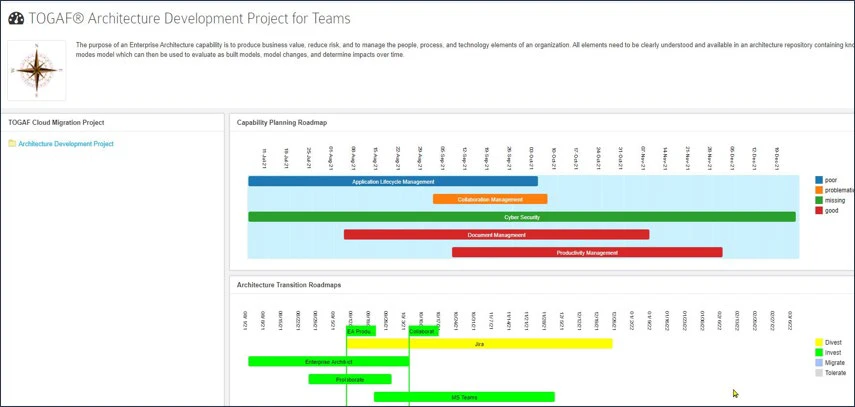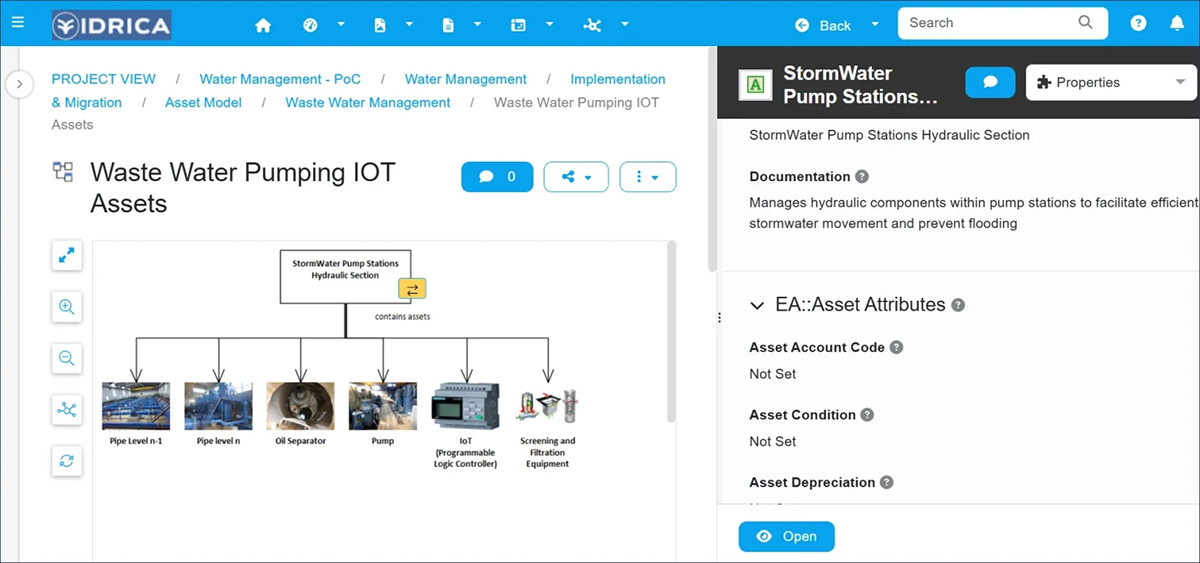Idrica Accelerates Business Transformation with Enterprise Architecture & the Sparx Architecture Platform

Idrica helped a water organisation in Saudi Arabia build a digital twin architecture using the Sparx Product Suite.
This case study explains how enterprise architecture (EA) and complementary tooling enable water utilities to tackle industry challenges, streamline operations, and drive transformation. Insights are provided by Cameron Brown (Enterprise Architect & Solution Lead) and Ramsay Millar (Enterprise Business Architect & Business Modeling Expert) at Integrate IT.
Client Overview
A water authority in Saudi Arabia faced rising demand, major network build-out, regulatory pressures, and persistent issues around water quality and scarcity. Priorities included strengthening cyber security, ensuring supply reliability, controlling data access, documenting as-commissioned assets, and supporting engineering reviews and capital planning.
Our case study details a program that applied EA methods and Sparx Systems tooling to realise a digital twin architecture. The objective: equip business and IT leaders to evolve complex operating models. CIOs and enterprise architects were tasked with reshaping the technology landscape in lockstep with shifting business architectures, producing an integrated view of the water ecosystem that unifies physical assets with digital systems.
IDRICA led the delivery team and selected Sparx Systems to model a digital twin of the utility. Water engineers, domain specialists, and enterprise architects captured, produced, and connected architectural knowledge.
Discover how the Sparx Systems Architecture Platform addresses enterprise architecture needs for modelling, traceability, governance, and stakeholder-specific views.
Challenges
Water utilities must re-engineer business models, reduce costs, create new products and services, and elevate customer experience. Adopting modern technologies is essential to optimise operations and financial performance while responsible water resource management continues. Meanwhile, data volumes from smart water networks, digital sensors, customer channels, and external sources are rapidly expanding.
Methods and Tools
Across industries, organisations are adopting the Internet of Things (IoT), artificial intelligence (AI), machine learning (ML), and cloud computing to advance transformation. Achieving durable outcomes, however, requires disciplined enterprise architecture development to deliver products and services that meet changing customer expectations, regulatory mandates, and environmental realities.
EA – supported by practical methods and tools – provides a factual foundation for digital innovation, knowledge management, and adaptive evaluation of solution alternatives. In the water sector, it helps identify opportunities in business context and define digital offerings that optimise existing practices.
Well-structured EA also organises the development and execution of digital strategy and is crucial to its success. Executed effectively, EA gives utilities an end-to-end view of the physical plant and the digital structures of the operating model. By aligning operational strategy to enabling technology, EA equips water companies with visibility and direction for data-driven decision-making.
EA Methods
The team adopted the TOGAF Architecture Development Method (ADM) and ArchiMate to complete and align all architecture layers with current operating realities, IT portfolios, and budget constraints. Balancing long-term strategic goals with near-term tactical action was key to early wins.
EA Tools
The Sparx Systems Product Suite – Enterprise Architect, Prolaborate, and PCS – was selected for its low barrier to entry, security, and flexible cloud deployment options. Enterprise Architect is a recognised front-runner with over one million users worldwide.
By adopting the Sparx Systems Cloud Suite, a modern data-driven EA platform, the team could inventory IT assets, model and track relationships, collaborate, and perform analysis that delivers real-time insights to business and technology leadership. Using the suite to manage and optimize IT enables utilities to lower costs, mitigate risk, and increase agility. The platform integrates multiple data sources to capture, document, and maintain real-time views of capabilities, processes, data, IT infrastructure, and operational assets – an essential enabler for large-scale digital transformation in the water industry.
Sparx Systems Enterprise Architect, combined with Prolaborate, proved highly effective due to open data integration. Real-time architecture is maintained as a single source of truth that lets leaders, architects, and stakeholders collaborate across the enterprise. Prolaborate simplifies information sharing through strategic reporting and precise visual models delivered via curated views. Distributed access empowers analysts to optimize workflows; re-engineered process models let stakeholders run their own analyses.

Project Screenshot of Enterprise Architect tool viewing the Water Management Repository
to reveal Traceability from Capabilities to Processes
Empower Your Teams
Idrica engaged a Sparx expert to mentor, train, and guide the EA program. Simply deploying software or AI without investing in people rarely sustains success. Training equips teams with the skills, knowledge, and confidence to perform effectively, collaborate efficiently, and contribute to organisational outcomes. It fosters ownership, innovation, and morale – boosting productivity and engagement.
The approach featured customised, hands-on tool training using water-sector examples drawn from the operating model to build confidence and prove value.
Common Language Model
A standardised language was established to model and define terminology and semantics – a concept model for business vocabulary. This discipline enabled early creation of a capability-oriented business glossary, promoting consistent use of key terms and associated knowledge. The result was more precise, evidence-based architecture development.

Capability-Based Strategy and Planning
Prolaborate Capability Roadmap dashboards linked strategic objectives to day-to-day work, making clear how investment decisions supported business goals. Project visuals from Prolaborate brought business stakeholders into alignment on IT investment planning.

Dashboard view in Prolaborate
Process-Centric Execution
Business Process Management (BPM) applies a structured cycle – analyse, design, implement, monitor, optimise – to improve workflows and outcomes. The case study delivered execution tracing from Value Streams through Process Cooperation to Process Scope, with optional swimlanes aligned to Six Sigma practices. The Prolaborate “Process-Driven Execution” dashboard provided line-of-sight from the boardroom to process execution. Configurable dashboards present stakeholder views in one place by security group.

Project screenshot from Prolaborate’s Process Driven Execution Dashboard
to provide line of visibility from broad room to process execution
Application Lifecycle Management
Application Lifecycle Management (ALM) governs a software application from inception to retirement, spanning planning, development, testing, deployment, and maintenance. The project cataloged hundreds of applications and related data stores, identified duplicate functionality and systems of record, and supported scenario-based application rationalisation.

Project screenshot from Prolaborate Dashboard of the Application Rationalisation Roadmap
Data-Driven Approach
Organisations attempting to add AI-powered reporting to traditional architectures struggle to keep pace with evolving market and customer needs – the same is true for water utilities. The sector is at an inflection point that requires rethinking how IT investments are planned and executed. Business-as-usual strategies limit access to the agile technologies powering today’s leading enterprises.
With rising O&M costs and population-driven network expansion, utilities are focusing on operational efficiency and cost control. A responsive, adaptive architecture – supported by modern EA methods and tools and by agile delivery – is required to address rapidly changing business demands and environmental factors.
Contemporary EA practices and tooling deliver significant value for water and utility companies by improving innovation, reusability, stability, and standardisation. Sparx EA strengthens asset management, business processes, change management, resource management, and – critically – interoperability and integration.
Water Asset Management
Generated models ensured every physical asset and associated IoT device was visualised, traceable, and secured. Real-time hardware lifecycle management, custody tracking, and actionable insights were delivered in a centralised tracking platform, mirrored via data integrations to avoid single-tool dependency. Operational data was collected without forcing teams to switch tools. The Sparx Systems Product Suite uses an open API and interoperates with leading water-industry solutions.
Open API integration enables seamless connections with Configuration Management Databases (CMDB), Asset Management (AM), and other platforms to generate synchronised views and models.

Project screenshot from Prolaborate an Engineering approved
Storm Water Pumping Station plan including associated IoT devices.
Outcomes Achieved
Empowered Teams: Training provided the skills and knowledge needed to execute.
Common Language Model: Standardised business vocabulary for consistent communication.
Capability-Based Planning & Execution: Prolaborate dashboards linked strategy to daily work.
Data-Driven Enterprise Architecture: Adoption of new technologies, including AI.
AI Analytics: Operational data surfaced as business insights through dashboards.
Consistent Terminology: Enterprise-wide alignment on definitions.
Collaborative Stakeholder Review: Web-based collaboration for project teams.
Standardised Documentation: Custom web dashboards produced consistent reporting.
Data Discovery & Collaboration: Support for innovation and data-driven initiatives.
Easy Access: Stakeholders accessed Prolaborate dashboards with minimal friction.
Effective Roadmaps: Capability-driven roadmaps connected strategy with execution.
Engineering Governance & Compliance: Policy reviews supported site planning.
Fact-Based Single Source of Truth: Centralised knowledge repository.
Immediate Traceability: Visual models exposed end-to-end traceability.
Low Cost of Entry: Cloud-based toolset with flexible deployment strategies.
Rapid Onboarding: Consistent documentation accelerated new-hire training.
Reuse of TOGAF & ArchiMate: Standard diagram notation leveraged across the program.

